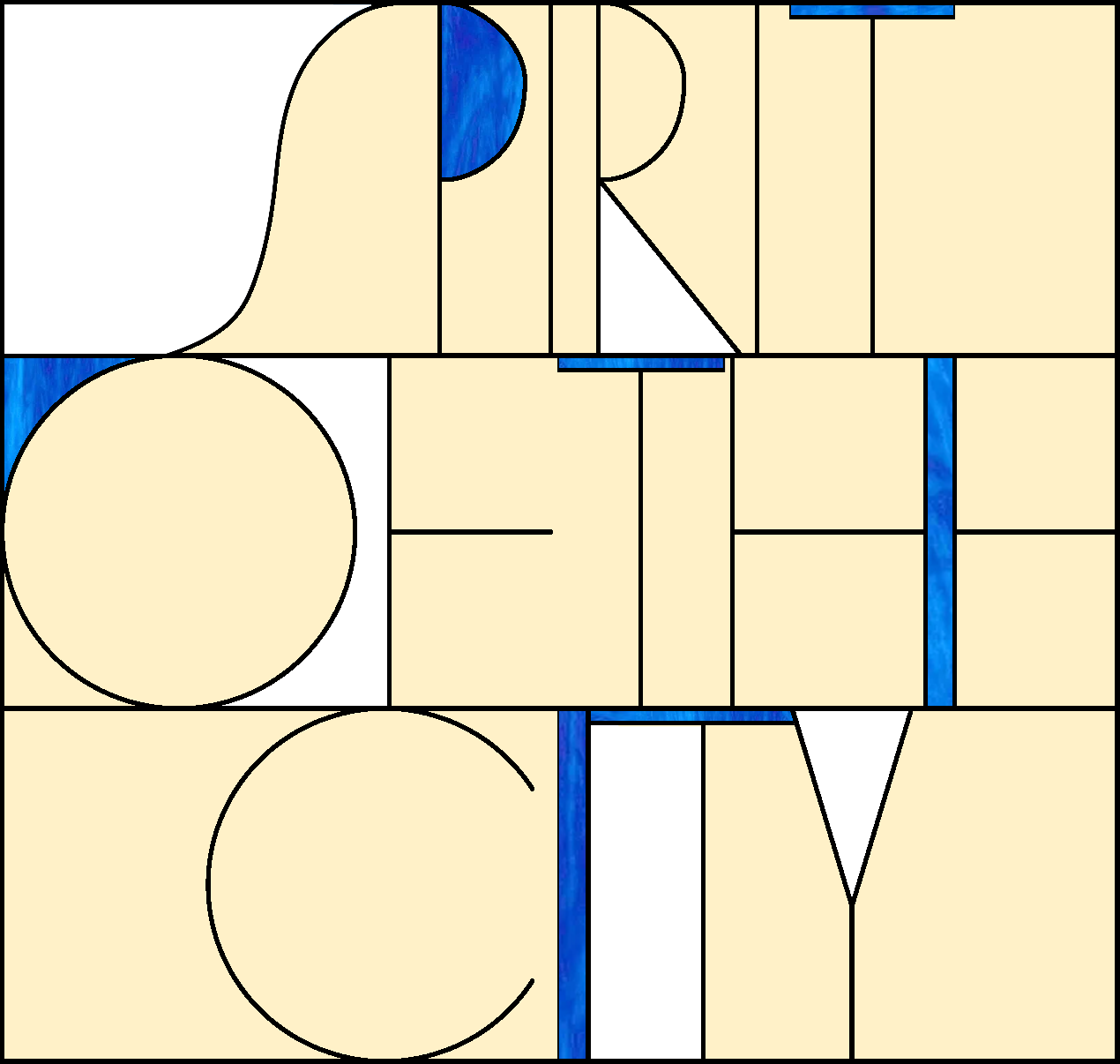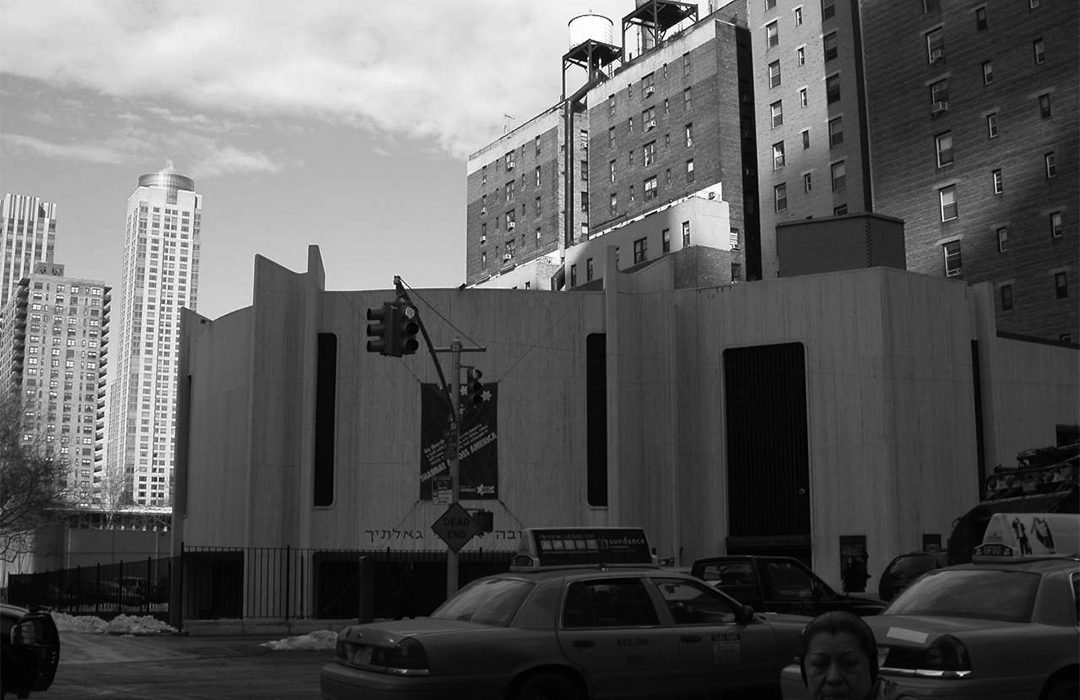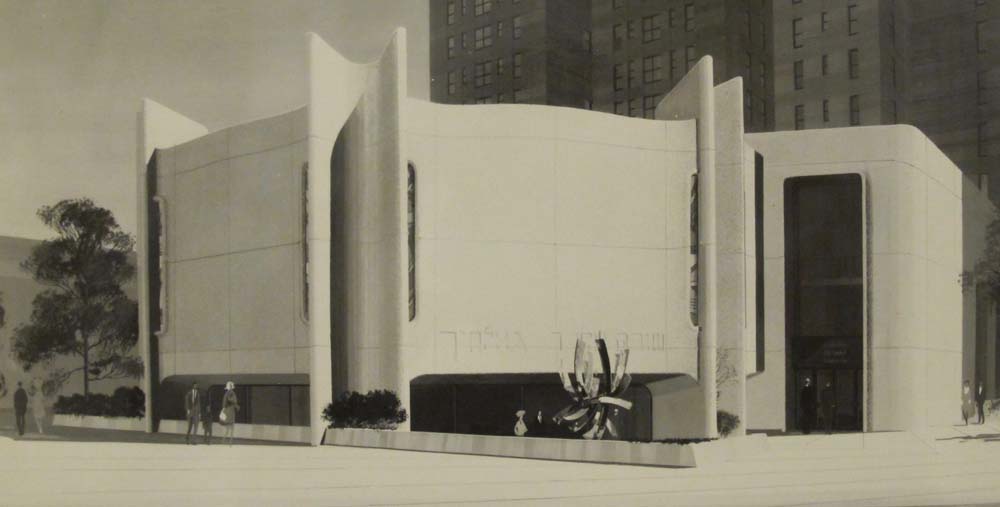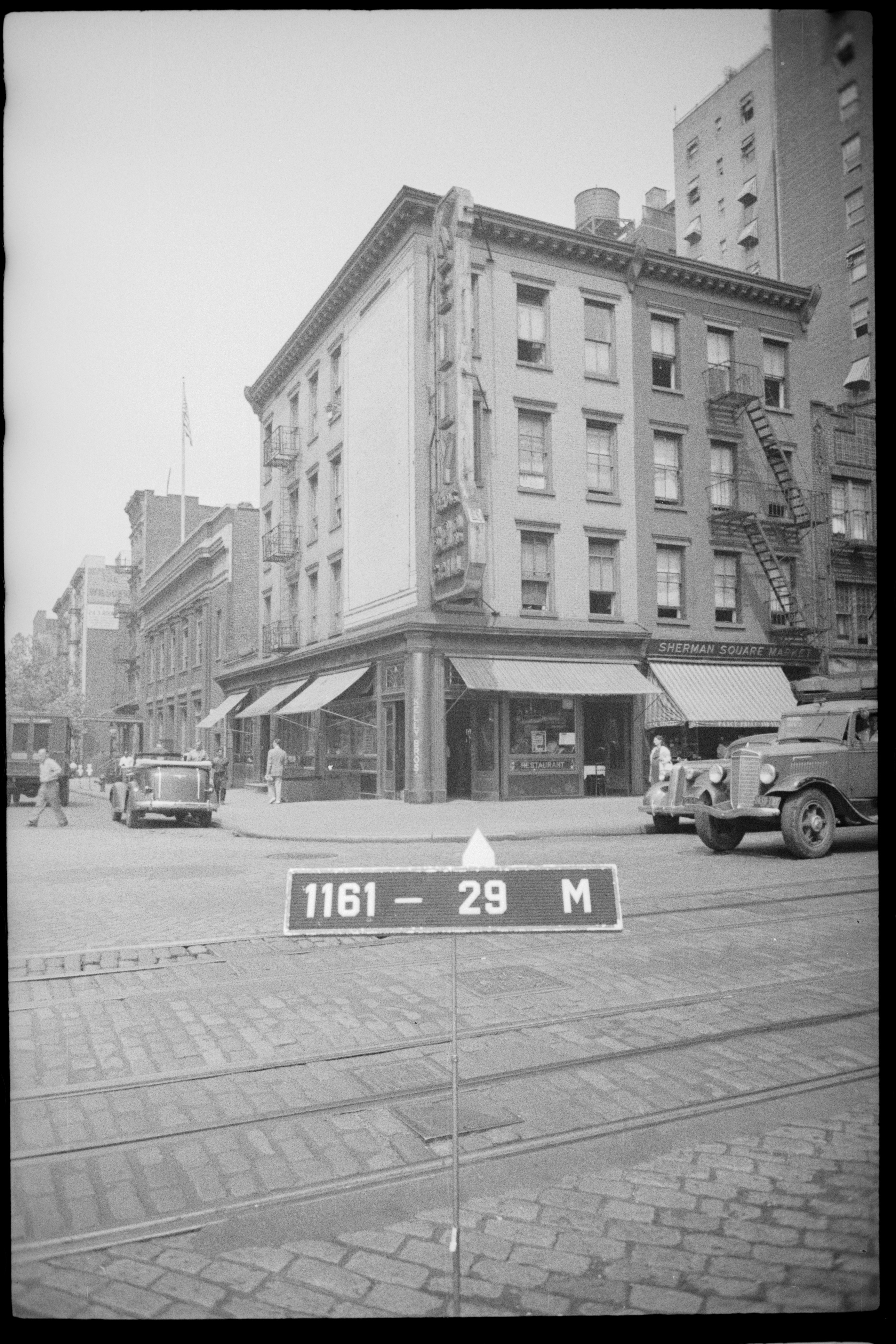
(Former) Lincoln Square Synagogue
200 Amsterdam Avenue
by Tom Miller
In 1970, six years after Rabbi Schlomo Riskin founded the congregation, the Lincoln Square Synagogue completed the construction of its travertine-clad structure at 200 Amsterdam Avenue. Designed by Hausman & Rosenberg, its Modernist design included slightly curved walls and lancet-like windows that nestled against prominent corner fins. The façade was carved with the Hebrew inscription from Isaiah 44:22, the translation of which read: Return to Me For I Have Redeemed You.
Oscar Israelowtiz, in his 1982 Synagogues of New York City, noted, “Reaffirming the Torah as the central core of Jewish life, the architects designed the structure as a theater in the round.” The auditorium could accommodate 500 worshipers, although, according to Edward Abramson in his A Circle in the Square: Rabbi Schlomo Riskin Reinvents the Synagogue, “There were also an additional two hundred to three hundred people who listened to the classes which were broadcast electronically to the ballroom downstairs.”
“Reaffirming the Torah as the central core of Jewish life, the architects designed the structure as a theater in the round.”
The congregation was what was termed “Modern Orthodox.” A great emphasis was placed on attracting young, single members, and those who were “retired” from Judaism. While researching her book Tradition in a Rootless World, Lynn Davidman interviewed a young woman who related her visit to a small Upper West Side synagogue around Chanukah. The sexton approached her and whispered, “Listen, you don’t want to come here. It’s only old people. Go to Lincoln Square Synagogue. They have lectures; they have young people. You’ll find a chassan [husband]; you’ll find a man.” He paused for a second, then urged, “Just go. I know you’ll find something.”
Indeed, as Cathryn Jakobson wrote in her article titled “The New Orthodox” in the November 17, 1986 issue of New York Magazine, the ultra-religious “start to feel that Lincoln Square, with all its young, single, well-to-do people, is a very abnormal place.” And yet, as noted by The New York Times in 1981, many of the congregants were becoming “seriously interested in their Jewish identity for the first time in their lives.” The article pointed out avant-garde composer Steve Reich who “dropped out of Jewishness” following his bar mitzvah. At the age of 39, he joined Lincoln Square Synagogue to investigate “what it means to be Jewish.”
It was Rabbi Ephraim Buchwald who had convinced Steve Reich to attend services. But on the evening of December 18, 1979, it was not souls that Rabbi Buchwald was intent on saving, but the shul’s coffers. The New York Times reported that after being told that there was someone lurking about the synagogue, he stepped out of his office to investigate. Finding no one, he returned to discover a man “putting charity boxes and other items into a bag.” John McKiver bolted, closely followed by Rabbi Buchwald and the custodian, Solomon Affum. The pair tackled McKiver at the corner of Broadway and 72nd Street, wrestled him into submission, and held him until police arrived.
The congregation’s success resulted in its need for larger quarters. In 2006, it agreed to what was called a land swap with American Continental Properties—200 Amsterdam Avenue for 180 Amsterdam Avenue, 250 feet away. The architectural firm of CetraRuddy was commissioned to design a new, multi-million dollar synagogue. A problem with finances stalled the project, but on January 27, 2013, architectural journalist David W. Dunlap of The New York Times titled an article, “At Last, a New Lincoln Square Synagogue.”
The pair tackled McKiver at the corner of Broadway and 72nd Street, westled him into submission, and held him until police arrived.
In March 2016, the U.S. branch of the Tokyo-based Mitsui Fudosan and SJP Properties announced plans to erect a 51-story, 112-unit residential building on the site of Hausman & Rosenberg’s striking structure at 200 Amsterdam Avenue.
Lincoln Square Synagogue moved into its new, 52,000 square foot home. Between nearly windowless sections of dark stone, five floors of undulating, narrow glass panes give the building movement. Inside, the “theater in the round” configuration of the old sanctuary was kept.
Tom Miller is a social historian and blogger at daytoninmanhattan.blogspot.com




